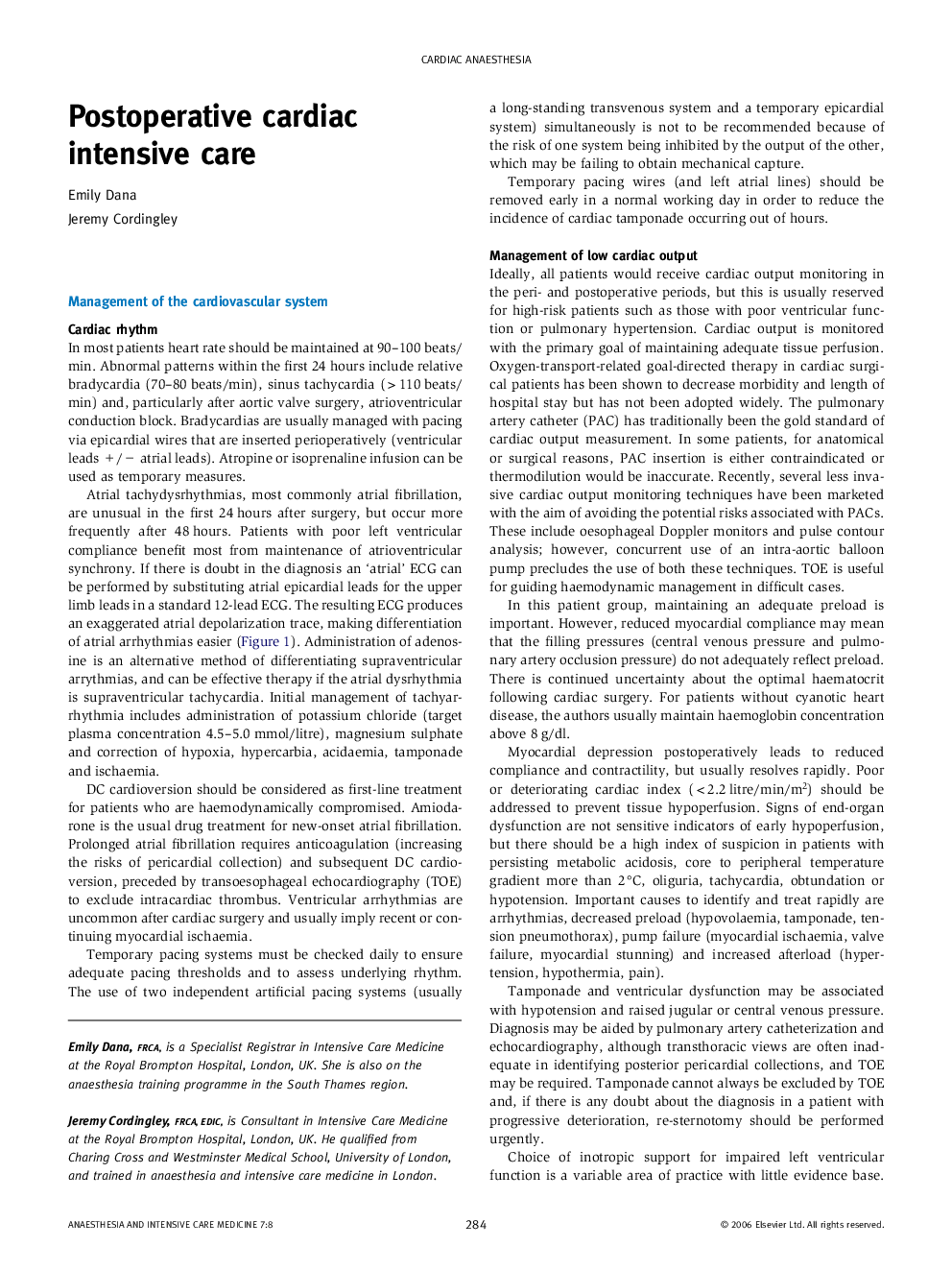| Article ID | Journal | Published Year | Pages | File Type |
|---|---|---|---|---|
| 2743794 | Anaesthesia & Intensive Care Medicine | 2006 | 5 Pages |
This article outlines some of the major considerations in the intensive care of patients after cardiac surgery. In most patients heart rate should be maintained at 90–100 beats/min. Abnormal patterns within the first 24 hours include relative bradycardia (70–80 beats/min), sinus tachycardia (> 110 beats/min) and, particularly after aortic valve surgery, atrioventricular conduction block. Atrial tachydysrhythmias, most commonly atrial fibrillation, are unusual in the first 24 hours after surgery, but occur more frequently after 48 hours. Patients with poor left ventricular compliance benefit most from maintenance of atrioventricular synchrony. DC cardioversion should be considered as first-line treatment for patients who are haemodynamically compromised. Ideally all patients would receive cardiac output monitoring in the peri- and postoperative periods, but this is usually reserved for high-risk patients such as those with poor ventricular function or pulmonary hypertension. Right ventricular dysfunction remains a significant problem following cardiac surgery. It is a particular issue in certain cardiac surgical settings: cardiac transplantation, congenital heart disease, mitral valve disease with pulmonary hypertension, and coronary artery disease.
